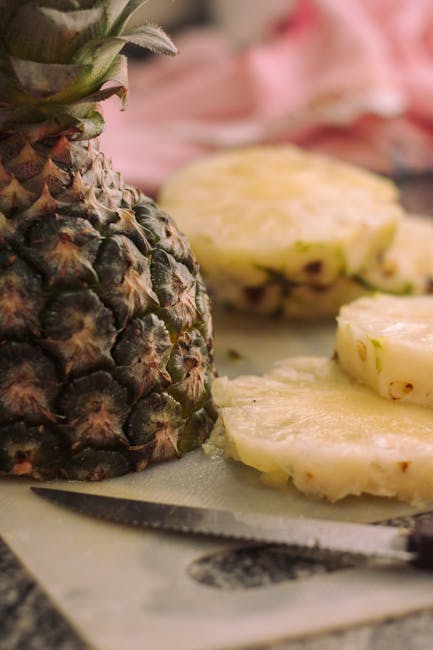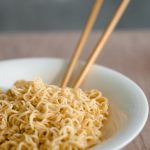Fresh pineapple juice, a vibrant and tangy beverage, boasts a rich history intertwined with the fascinating journey of the pineapple itself. Originating in the region encompassing southern Brazil and Paraguay, the pineapple, scientifically known as Ananas comosus, has captivated cultures worldwide for centuries. Unlike many fruits domesticated over millennia, the pineapple’s domestication is relatively recent, estimated to have occurred between 4,500 and 8,000 years ago, primarily by indigenous populations in South America. Early cultivation likely involved selecting for larger, sweeter fruits, a testament to the early appreciation for this unique fruit’s flavor.
The pineapple’s arrival in Europe marked a significant turning point in its story. Christopher Columbus encountered the fruit during his voyages in the late 15th century and brought it back to Europe, where it quickly became a symbol of wealth and exotic luxury. Its unusual appearance and delicious taste made it a highly sought-after commodity, often adorning tables of the wealthy and powerful. The high cost of importing pineapples meant they were reserved for special occasions and became associated with opulence and hospitality. The iconic pineapple motif found its way into art, architecture, and even clothing, further solidifying its status as a symbol of luxury.
Today, the pineapple’s journey continues. Global pineapple production surpasses 25 million tonnes annually, with Costa Rica, Brazil, and the Philippines among the leading producers. This widespread cultivation has made pineapple juice a readily accessible and affordable beverage worldwide. However, the juice’s journey from fruit to glass often involves complex processing, with some juice varieties containing added sugars or preservatives. Choosing 100% fresh pineapple juice ensures that you are receiving the full complement of nutrients and the naturally sweet, tangy flavor the fruit is known for. Furthermore, pineapple juice is a rich source of Vitamin C, manganese, and bromelain, an enzyme with potential anti-inflammatory properties. These nutritional benefits, coupled with its refreshing taste, contribute to the enduring popularity of this tropical delight.
Beyond its commercial success, the pineapple holds considerable cultural significance in various parts of the world. In some cultures, it is still viewed as a symbol of welcome and hospitality echoing its past association with luxury. In others, it plays a role in traditional ceremonies and celebrations. The versatility of the fruit is reflected in its use in both sweet and savory dishes, from refreshing juices to savory curries, demonstrating its enduring adaptability and cultural impact. The simple act of enjoying a glass of fresh pineapple juice, therefore, connects us to a rich history and a global tapestry of flavors and traditions.
Ingredients and Measurements
Making fresh pineapple juice is a simple process, but the quality of your ingredients directly impacts the final taste and nutritional value. Therefore, selecting ripe, high-quality pineapples is paramount. Avoid pineapples that are bruised, overly soft, or show signs of spoilage. A good pineapple will have a fragrant aroma and yield easily to gentle pressure.
For this recipe, we’ll focus on producing approximately 4 cups (950ml) of fresh pineapple juice. You can easily adjust the quantities based on your needs. The key is maintaining the correct ratio of pineapple to liquid to achieve the desired consistency and sweetness.
Ingredients:
- 1 large ripe pineapple (approximately 3-4 pounds or 1.4-1.8 kg): The weight can vary depending on the size of the pineapple. Choose a pineapple that feels heavy for its size, an indicator of ripeness and juiciness. Avoid pineapples that are green or have brown spots, as these are signs of immaturity or spoilage.
- Optional: 1/2 cup (120ml) filtered water: Adding a small amount of water can help to extract more juice, especially if your pineapple is slightly less juicy than expected. If your pineapple is very ripe and juicy, you may not need any water.
- Optional: 1-2 tablespoons (15-30ml) lime juice: A touch of lime juice helps to brighten the flavor profile and prevent enzymatic browning, which can occur when pineapple is exposed to air. This is particularly helpful if you plan to store the juice for a short period.
Detailed Measurements and Preparation Notes:
Before you begin, ensure you have the necessary tools: a sharp knife, a cutting board, a juicer (either a manual or electric model), and a strainer (optional, but recommended for a smoother juice). If using a manual juicer, remember that it can be quite labor-intensive for large quantities of pineapple.
Preparation steps:
- Wash the pineapple thoroughly under cold running water, scrubbing gently to remove any dirt or debris.
- Cut off the top and bottom of the pineapple.
- Stand the pineapple upright and slice off the skin using a sharp knife, following the curve of the fruit. Be careful not to cut yourself.
- Remove the tough core from the center of the pineapple. You can do this by cutting lengthwise down the center and then slicing out the core from each half. Alternatively, you can cut out triangular sections, avoiding the core.
- Cut the pineapple into smaller chunks that are suitable for your juicer. For a manual juicer, smaller chunks are usually necessary.
- Juice the pineapple. If using an electric juicer, follow your manufacturer’s instructions. If using a manual juicer, press the pineapple firmly against the juicer to extract the juice.
- If using a strainer, pour the juice through a fine-mesh strainer to remove any pulp or fibers. This step is optional, as some people prefer a pulpier juice.
- (Optional) Add the lime juice and/or filtered water to your taste after juicing.
Storage: Fresh pineapple juice is best consumed immediately for the best flavor and nutritional value. If storing, refrigerate in an airtight container for up to 2 days. Avoid storing for longer periods, as the juice may lose its freshness and quality.
Equipment List: Fresh Pineapple Juice Production
Producing high-quality fresh pineapple juice requires the right equipment. This list details the necessary tools, categorized for clarity, along with recommendations for optimal performance and hygiene.
I. Pineapple Preparation Equipment:
A. Pineapple Cutting Tools: You will need a sharp, sturdy knife (at least 8 inches long) for efficient and safe pineapple cutting. A serrated knife can be helpful for cutting through the tough rind. Consider investing in a good quality chef’s knife for versatility. Quantities: 1 chef’s knife, 1 serrated knife (optional). Recommendation: Regularly sharpen your knives to maintain efficiency and safety. Dull knives are more dangerous and lead to uneven cuts.
B. Pineapple Corer: A pineapple corer is highly recommended to quickly and cleanly remove the tough core, which is inedible and can make the juice bitter. Quantities: 1 pineapple corer. Recommendation: Choose a corer with a durable construction, preferably stainless steel, for easy cleaning and longevity.
C. Cutting Board: A large, sturdy cutting board (at least 12×15 inches) is essential for safe and efficient pineapple preparation. Quantities: 1 large cutting board. Recommendation: Use a cutting board made of food-safe materials like plastic or wood (properly treated). Avoid using glass cutting boards as they can chip and dull your knives quickly.
II. Juicing Equipment:
A. Juicer: The choice of juicer significantly impacts the quality and yield of your juice. A high-quality centrifugal juicer is recommended for its speed and efficiency in processing large quantities of pineapple. Alternatively, a masticating juicer produces a higher yield and more nutrient-rich juice, but it is slower. Quantities: 1 centrifugal juicer or 1 masticating juicer. Recommendation: Choose a juicer with a wide feed chute to minimize pre-cutting time and a powerful motor to effectively extract juice from the fibrous pineapple flesh. Consider the size of your operation when choosing a juicer; commercial-grade models are available for larger-scale production.
B. Measuring Cups and Spoons: Accurate measurements are crucial for consistency. A set of standard measuring cups and spoons is necessary for any recipe adjustments or additions. Quantities: 1 set of measuring cups and spoons. Recommendation: Use stainless steel or plastic measuring tools for easy cleaning and durability.
III. Post-Juicing and Storage Equipment:
A. Storage Containers: You’ll need airtight containers to store the freshly squeezed juice. The size depends on the quantity produced. Quantities: Multiple airtight containers (sizes vary depending on production volume). Recommendation: Use glass containers for optimal preservation and to avoid any potential chemical leaching from plastic containers. Label containers with date and time of juicing for quality control.
B. Strainer (Optional): A fine-mesh strainer can be used to remove any remaining pulp or fibers if desired, resulting in a smoother juice. Quantities: 1 fine-mesh strainer. Recommendation: A stainless steel strainer is easy to clean and durable.
IV. Cleaning and Sanitation Equipment:
A. Cleaning Brushes and Sponges: Thorough cleaning is vital to maintain hygiene. Quantities: Multiple cleaning brushes (different sizes for various equipment parts) and sponges. Recommendation: Use separate brushes and sponges for different equipment to avoid cross-contamination.
B. Dish Soap and Sanitizer: Food-safe dish soap and a commercial-grade sanitizer are essential for maintaining hygiene and preventing bacterial growth. Quantities: As needed. Recommendation: Follow the manufacturer’s instructions for proper dilution and usage of the sanitizer.
Preparation Phase: Pineapple Cleaning and Peeling
Before embarking on the journey of creating fresh pineapple juice, meticulous cleaning and peeling of the pineapple is paramount. This phase lays the foundation for a high-quality, delicious end product, free from unwanted elements and ensuring optimal flavor extraction.
Begin by selecting a ripe pineapple. A ripe pineapple will have a fragrant aroma, a slightly soft feel when gently pressed, and a yellowish-green to golden-brown color. Avoid pineapples that are bruised, have soft spots, or show signs of mold or decay. A pineapple weighing approximately 2-3 pounds (0.9-1.4 kg) will yield a generous amount of juice for a single serving or small batch.
Thorough Washing: The first step involves a thorough washing of the pineapple under cold running water. This removes any surface dirt, pesticides, or debris that might have accumulated during transportation and handling. Use a vegetable brush to scrub the rind gently, paying particular attention to the crown and base where dirt tends to accumulate. Rinse the pineapple thoroughly again to eliminate any remaining residue.
Removing the Crown and Base: Using a sharp knife, carefully cut off the crown and base of the pineapple. These parts are generally tough and fibrous and are not suitable for juicing. Ensure you cut cleanly to avoid leaving any excess stem or base attached to the fruit. Discard these trimmings or save them for composting.
Peeling the Pineapple: There are several methods for peeling a pineapple. One efficient technique involves standing the pineapple upright and using a sharp vegetable peeler to remove the tough outer skin, working from top to bottom. Be careful to avoid cutting into the edible flesh. Another method involves cutting off the eyes (the spiky protrusions on the pineapple’s skin) with a paring knife before peeling. This method requires more precision but ensures a cleaner peel.
Removing the Core: The core of the pineapple is tough and fibrous, and it’s essential to remove it before juicing. Several methods exist. One common approach is to cut the peeled pineapple into quarters lengthwise. Then, using a sharp knife, carefully cut out the core from each quarter. Alternatively, you can cut the peeled pineapple into thick slices and then use a spoon or a small paring knife to scoop out the core from each slice. Ensure complete core removal to prevent a bitter taste in the juice.
Post-Peeling Inspection: After peeling and coring, visually inspect the pineapple flesh for any remaining blemishes or imperfections. If you find any discolored or damaged areas, carefully trim them away with a sharp knife. Maintaining high hygiene standards throughout this process is crucial for producing safe and high-quality pineapple juice.
Once the pineapple is thoroughly cleaned, peeled, and cored, you are ready to proceed to the next stage of juice extraction. Remember, proper preparation significantly impacts the final taste and quality of your fresh pineapple juice.
Juicing Technique (e.g., using a juicer, blender, or manual method)
Creating fresh pineapple juice is a rewarding experience, and the method you choose depends largely on your available equipment and desired outcome. Let’s explore three common approaches: using a juicer, a blender, and a manual method.
Method 1: Using a Juicer (Centrifugal or Masticating)
This method offers the highest juice yield and the purest juice, minimizing pulp. For a centrifugal juicer, start by peeling and coring a medium-sized pineapple (approximately 2 lbs or 900g). Cut it into manageable chunks that fit comfortably into your juicer’s feeding tube. Avoid overcrowding the chute to prevent jamming. Turn on the juicer and feed the pineapple pieces steadily. Collect the juice in a container and immediately refrigerate to maintain freshness and prevent oxidation which can cause browning and loss of nutrients.
Masticating juicers, known for their slower speed and gentler extraction, also work well. Follow the same preparation steps as above, but you might need to pre-cut the pineapple into smaller pieces for easier processing. Masticating juicers often produce a thicker juice with more pulp, if desired.
Method 2: Using a Blender
Blending is a simpler method, ideal if you don’t own a juicer. Again, begin with a peeled and cored medium-sized pineapple (approximately 2 lbs or 900g). Cut it into smaller pieces for easier blending. Add the pineapple chunks to your blender along with approximately ½ cup (120ml) of water. The water helps to facilitate blending and create a smoother consistency. Blend on high speed until completely smooth.
For a smoother juice, strain the blended mixture through a fine-mesh sieve or cheesecloth. This removes the pulp, resulting in a clearer juice. If you prefer a pulpier juice, skip this step. Refrigerate immediately after blending or straining.
Method 3: Manual Method (for smaller quantities)
While less efficient for larger batches, the manual method provides a hands-on approach. Peel and core a small pineapple (approximately 1 lb or 450g). Finely chop the pineapple. Using a mortar and pestle, grind the pineapple until it releases its juice. This requires considerable effort and time. Alternatively, you can use a food mill or potato ricer to extract the juice.
Strain the resulting mixture through a fine-mesh sieve or cheesecloth if you prefer a pulp-free juice. This method is best for smaller quantities and yields a less efficient juice extraction compared to a juicer or blender.
Important Considerations for All Methods:
Freshness is key. Use ripe, high-quality pineapple for the best flavor and nutrient content. Store your freshly squeezed pineapple juice in an airtight container in the refrigerator for up to 2-3 days. For longer storage, consider freezing the juice in ice cube trays or freezer-safe containers.
Adjust sweetness to taste. If you prefer a sweeter juice, you can add a touch of honey or agave nectar after juicing. Always taste and adjust before serving.
Filtering (if applicable)
Filtering fresh pineapple juice is a crucial step to ensure a smooth, appealing final product, free from pulp and fibrous materials. While some prefer a pulpy juice, many recipes and consumer preferences lean towards a clearer, smoother texture. The decision to filter, and the method used, will depend heavily on the desired outcome and the available equipment.
The most common filtering methods for pineapple juice include straining, sieving, and using cheesecloth. Each method offers varying degrees of filtration, impacting both the texture and yield of the final juice.
Straining is a quick and easy method suitable for removing larger pieces of pulp. A fine-mesh strainer (about 1/8-inch mesh) is ideal for this purpose. Simply pour the freshly juiced pineapple into the strainer placed over a bowl or pitcher. Gently press the pulp with a spoon or spatula to extract as much juice as possible. This method leaves behind a significant amount of pulp, resulting in a slightly cloudy but relatively smooth juice. Expect to retain approximately 75-85% of the original juice volume after straining.
Sieving offers a finer filtration than straining. A fine-mesh sieve (ideally with a mesh size of less than 1/16-inch) will remove more pulp and result in a clearer juice. The process is similar to straining; pour the juice into the sieve and gently press the pulp. Sieving will typically yield a clearer juice than straining, retaining about 70-80% of the original juice volume. However, some very fine particles might still remain, leading to a slightly hazy appearance.
Cheesecloth filtering provides the finest filtration, resulting in the clearest juice. Line a fine-mesh sieve with a double layer of cheesecloth for extra strength and filtration. Pour the juice into the cheesecloth-lined sieve and let it drain naturally. Gently squeeze the cheesecloth to extract as much juice as possible. Cheesecloth filtering is the most time-consuming method but produces the clearest juice, although you may only retain 65-75% of the original volume. This method is best for applications where clarity is paramount, such as cocktails or clear juice blends.
Professional recommendations: For large-scale juice production, consider using a centrifugal juice extractor, followed by a fine-mesh filter or industrial-grade filter press for optimal clarity and efficiency. Always maintain strict hygiene throughout the filtering process to prevent spoilage. Thoroughly clean and sanitize all equipment before and after use. Properly stored, filtered pineapple juice can last for 3-5 days in the refrigerator.
Ultimately, the choice of filtering method depends on your desired outcome and the resources available. Consider the trade-off between clarity and yield when selecting your approach. Experiment with different methods to find the filtration level that best suits your preferences.
Storage Instructions
Proper storage of your fresh pineapple juice is crucial to maintaining its delicious flavor, vibrant color, and essential nutrients. Following these guidelines will help ensure you enjoy the best possible taste and quality from your purchase.
Refrigeration is Key: Once opened, your fresh pineapple juice should be refrigerated immediately. This significantly slows down the enzymatic activity that can lead to spoilage, degradation of flavor, and a loss of valuable vitamins. Keep the bottle tightly sealed in your refrigerator to prevent oxidation and contamination.
Refrigeration Temperature: The ideal storage temperature for your fresh pineapple juice is between 35°F and 40°F (1.7°C and 4.4°C). Ensure your refrigerator is maintained within this range for optimal preservation. Avoid storing the juice near strong-smelling foods, as pineapple juice is highly absorbent and can pick up unwanted flavors.
Shelf Life After Opening: While unopened, fresh pineapple juice typically has a shelf life of several months when stored properly (check the “best before” date on the bottle). However, once opened, the juice should be consumed within 7-10 days for optimal quality. After this period, the flavor may start to diminish, and the risk of spoilage increases.
Freezing for Extended Storage: If you anticipate not being able to consume the entire bottle of pineapple juice within 7-10 days, you can extend its shelf life by freezing it. Pour the juice into ice cube trays or freezer-safe containers, leaving about ½ inch of headspace to allow for expansion during freezing. Frozen pineapple juice can typically be stored for up to 3-6 months. Remember to label the containers with the date of freezing.
Thawing Frozen Juice: When ready to use frozen pineapple juice, transfer the desired amount from the freezer to the refrigerator overnight to thaw slowly. This method helps maintain the quality of the juice better than rapid thawing. Avoid thawing at room temperature, as this can encourage bacterial growth. Once thawed, the juice should be consumed within 24 hours.
Signs of Spoilage: Before consuming your pineapple juice, always check for signs of spoilage. These may include a significant change in color (becoming darker or cloudy), an off-putting odor, or the presence of mold or sediment. If you notice any of these signs, discard the juice immediately. Do not risk consuming spoiled juice, as it can cause illness.
Important Note: These storage recommendations apply to fresh, commercially bottled pineapple juice. Storage instructions may vary for homemade or unpasteurized pineapple juice. Always follow the specific instructions provided by the manufacturer or source.
Fresh Pineapple Juice: Recommendations
Fresh pineapple juice is a delicious and refreshing beverage packed with vitamins and minerals. To fully enjoy its vibrant flavor and nutritional benefits, consider these recommendations.
Serving Suggestions: Enjoy your fresh pineapple juice chilled. It’s fantastic on its own as a thirst quencher, especially after a workout or on a hot day. For a more decadent experience, try adding a splash of sparkling water or club soda for a naturally sweet and bubbly drink. A squeeze of lime or a few mint leaves can also elevate the flavor profile. Consider blending it with other fruits like mango or strawberries for a tropical fruit fusion. For a healthy breakfast boost, add a scoop of your favorite protein powder for a nutritious start to your day. Alternatively, use it as a base for smoothies, adding yogurt, spinach, or other greens for a healthy green juice.
Storage Conditions: For optimal freshness and flavor, store your fresh pineapple juice in an airtight container in the refrigerator. It’s best consumed within 2-3 days of juicing to maintain its vibrant taste and nutritional value. Avoid storing it in direct sunlight or at room temperature, as this can lead to spoilage and a loss of nutrients. Freezing is possible, but it might slightly alter the texture and flavor. If freezing, use airtight freezer-safe containers to prevent freezer burn.
Complementary Dishes: The sweetness and tanginess of fresh pineapple juice make it a wonderful complement to a variety of dishes. It pairs beautifully with spicy foods, helping to balance the heat. Consider serving it alongside Mexican or Thai cuisine. Its bright acidity cuts through rich and fatty dishes, making it a perfect accompaniment to grilled meats or seafood. It can also be incorporated into marinades for chicken or fish, adding a tropical twist. For a refreshing palate cleanser, serve it between courses of a multi-course meal. The juice’s natural sweetness also makes it a great addition to desserts or breakfast dishes.
Nutritional Information (per 8oz serving, approximate values): The exact nutritional content will vary slightly depending on the ripeness and variety of pineapple used. However, a typical 8-ounce serving of fresh pineapple juice provides approximately: Calories: 100-120; Carbohydrates: 25-30g; Sugar: 20-25g; Vitamin C: 80-100% of the recommended daily intake; Manganese: 70-90% of the recommended daily intake; Fiber: 1-2g. Please note that these are estimates, and the actual values may differ.
Important Note: While generally safe, some individuals may experience allergic reactions to pineapple. If you have a known pineapple allergy, please avoid consuming pineapple juice. Individuals with sensitive stomachs might find the acidity of fresh pineapple juice to be irritating. In such cases, diluting it with water or adding a small amount of honey or agave nectar might help. Always check the ingredients if purchasing pre-packaged pineapple juice to ensure it’s 100% pineapple juice without added sugars or preservatives.





